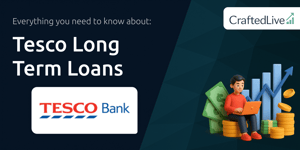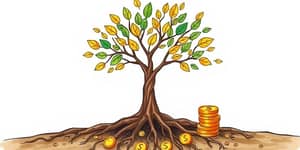
Deciding between a fixed rate loan and a variable rate loan is one of the most important financial choices a borrower can make. The decision impacts your monthly cash flow, total interest paid, and long-term financial security. Whether you are purchasing a home, consolidating debt, or financing a major purchase, understanding the nuances of each loan type ensures you can tailor your borrowing strategy to fit your goals and risk tolerance.
A fixed rate loan ensures stability and predictability by locking in an interest rate for the life of the loan. This means that your monthly repayments remain constant from the first to the last payment, allowing for precise budgeting and financial planning. Fixed rate products are popular for long-term mortgages or personal loans where certainty outweighs potential savings from rate fluctuations.
In contrast, a variable rate loan adapts to market conditions. The interest rate is tied to a benchmark or index—such as the federal funds rate or a bank’s prime rate—and can rise or fall over time. Variable rate products often start with a lower introductory rate, but they carry the risk of payment increases if market rates climb. Conversely, borrowers benefit directly when rates decline, lowering their repayment amounts without refinancing.
When comparing loan products, focus on these critical dimensions to understand how each structure affects your finances:
This table highlights how each feature can affect your financial plan. Fixed rate borrowers gain security at a potentially higher cost, while variable rate borrowers accept uncertainty for a chance at lower overall payments when market conditions turn in their favor.
When weighing fixed versus variable loans, start by assessing your personal financial profile. If you have a strict budget and cannot tolerate payment shocks, the guaranteed stability of fixed rates may be the right choice. Conversely, if you have a financial buffer and can handle occasional increases, a variable rate loan might yield savings over the loan’s life.
Economic forecasts play a pivotal role. In a low-rate environment with expectations of rising benchmarks, locking in a fixed rate could protect you from future hikes. If analysts predict stable or falling rates, variable loans could be more attractive. Always align your loan’s term with your outlook: shorter fixed periods in variable products, such as a 5/1 ARM, blend initial certainty with eventual variability.
Loan features beyond interest structure deserve attention, too. Fixed rate loans may carry early repayment penalties limit flexibility, increasing exit costs. Variable rate products often allow extra repayments and redraws, empowering borrowers to reduce principal more aggressively without fees. Evaluating these ancillary features can tilt the decision toward one product or another.
Financial institutions offer diverse hybrids to combine the best of both worlds. Hybrid loans begin with a fixed rate for a set period—commonly three, five, or ten years—before automatically converting to a variable rate. This structure gives borrowers initial certainty and later exposure to market-driven savings.
Convertible loans provide formal options to switch rate types at specific milestones without refinancing. For example, a borrower on a variable track may decide at year five that the market outlook justifies the security of a fixed rate for the remaining term. Such products require vigilance about conversion timing and associated costs.
Consider a homeowner who secures a 30-year fixed mortgage at 4.5%. This borrower enjoys long-term budget certainty for homeowners even if market rates climb to 6% over the next decade. However, they cannot capitalize if rates fall to 3%. In contrast, a variable rate borrower locked in initially at 3.8% may see their rate adjust upward in a rising rate cycle, increasing payments and tightening cash flow.
Experts recommend running repayment simulations under different rate scenarios. Some lenders provide calculators illustrating payment paths if rates move 1–2% above or below the starting point. Mortgage advisor Karen Li observes, “Building in a buffer—say, 1% above current rates—helps prevent mortgage stress if rates move unpredictably.”
Moreover, creditworthy borrowers with ample savings may choose variable loans, anticipating they can refinance if rates surge. Those less willing or able to refinance lean toward fixed products for safety. Aligning your tolerance for refinancing risk with rate structure is essential to avoid unwelcome surprises.
Your choice between fixed and variable rate loans should reflect both your financial objectives and market expectations. Ask yourself: What is my risk tolerance? How stable do I need my monthly payments to be? Am I likely to move, refinance, or pay off the loan early? Answering these questions, supported by professional insight and modelling tools, will clarify which product aligns with your needs.
Before committing, gather multiple quotes from different lenders. Compare not only the headline rates but the full cost of borrowing, considering fees, features, and potential penalties. An extra research step today can save you thousands over the life of the loan. Engage with a qualified mortgage broker or financial planner to interpret rate trends and product nuances, ensuring your home loan supports your broader financial goals.
Fixed and variable rate loan products each offer distinct advantages and risks. Choosing the right one hinges on balancing stability versus potential cost savings, considering economic forecasts, and reflecting on personal budget flexibility. By examining core differences, reviewing practical scenarios, and leveraging expert advice, you can secure a loan that underpins your pursuit of homeownership or financial growth. Armed with knowledge and careful planning, you are ready to navigate the lending landscape with confidence.
References













